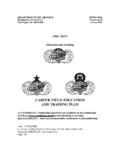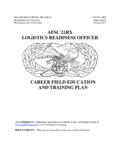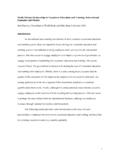Transcription of Life Skills – based Education for Drug Use Prevention ...
1 life Skills - based Education for drug Use PreventionTraining Manual1 life Skills based Education for drug Use PreventionTraining ManualContentsUNIT ONEI ntroductionAbout the ManualWhat is a drug ?Basic concepts underpinning the training manualAbout life Skills Goals of life Skills - based educationHarm Minimisation and SchoolsLife Skills and Safe, Supportive EnvironmentsHealth Promoting SchoolsUNIT TWOP lanning for life Skills - based Education for drug use preventionSection 1. Approaches to drug EducationLimits of Different ApproachesEffective ApproachesPrinciples of Good Practice in drug Education - In the School SettingSection 2. Incorporating knowledge, attitudes/ values and skillsKnowledge, Attitudes and Skills for Facilitators Overview of life Skills - based Approach for drug Education in Schools Four Methods of Implementing life Skills - based drug Education in SchoolsPossible Program ContentSection 3.
2 Consideration of IssuesSensitive issuesGenderParentsMediaNon-formal Programs and Community OrganisationPeer EducationSection 4. Planning Learning ActivitiesSection 5 Evaluation and AssessmentTypes of EvaluationTeachers Using EvaluationDetailed examples of indicators at the classroom levelLife Skills - based Education for drug Use PreventionTraining Manual2 Assessing attitudes towards drug useGuidelines: Evaluation of quality life Skills - based drug Education resourcesEvaluating life Skills - based drug Education programsUNIT THREELife SkillsLife Skill 1 - Working in Small Groups and FacilitationEffective groups, members roles, rules and goals, facilitation, tasks: making a decisionLife Skill 2 - CommunicationTypes of effective, verbal and non-verbal communication, active listening, barriers to communicationLife Skill 3 Decision-makingInfluences on, levels of, group and individual, decision-making model, values and feelingsLife Skill 4 - AssertionSupporting decisions, rights and responsibilities, assertive model, refusal Skills , resistance skillsLife Skill 5 Self Awareness Building SkillsDealing with feelings, personal responsibility, building self esteem and resilience, giving and gettingcomplimentsLife Skill 6 Coping and Stress Management SkillsGoal setting, positive thinking, time management, handling stress, negotiation Skills , conflictresolution.
3 Prioritising, handling social situations, asking for help, building support networksUNIT FOURF acilitator Support MaterialSection One - Teaching StrategiesExperiential LearningLearner centredCo-operative LearningEffective Group workInquiry MethodsQuestioning Techniques and Responding to QuestionsSelf disclosure and Personal QuestionsRole PlayBrainstormingSection Two - Group dividersSection Three - EnergisersUNIT FIVEW orkshop OrganisationLife Skills - based Education for drug Use PreventionTraining Manual3 Section One Workshop Planning ConsiderationsSection Two - Workshop FormatSection Three - Workshop ProgramSection Four - Workshop EvaluationSection Five - Workshop Follow UpUNIT SIXD rugs and HIV/AIDS Background InformationSection One - drug InformationSection
4 Two - HIV/AIDS InformationUNIT SEVENA ppendicesSection One - Reasons young people use drugsSection Two - Identification of drug usersSection Three - Basic counselling Skills for teachersSection Four - Involving parents and communitiesUNIT EIGHTR eferencesLife Skills - based Education for drug Use PreventionTraining Manual4 Quality Assuarance In Teaching And Learning MaterialsName of resource : _____Source (producer): _____Date published: _____Type of resource (check all that apply) Curriculum / textbook Learning materials / worksheets Teachers' manual / teaching materials training manual Video Comic book Other please specify _____What are the objectives?_____Who is the target audience? _____What time investment is suggested?
5 (# sessions, time per session, # week/months/years)_____For what setting(s) is the resource intended? ( , schools, health centers, community centers)_____In what kind of setting(s) is the resource currently being used?_____Has the resource been evaluated? Yes NoIf Yes, by whom and with what findings?_____Life Skills - based Education for drug Use PreventionTraining Manual5 Quality ChecklistName of resource: _____Quality criteriaScore(1-5, with 5 as thehighest)Comments1. Behaviour change (Total Score)- How prominent is behaviour changeas part of objectives?2. Knowledge / Information (Totalscore -- )- clear?- accurate?- up-to-date?- relevant for drug Prevention ?3. Attitudes (Total score --)- How well are attitudes andmotivation addressed?
6 - How adequately are discriminationand stereotypes addressed?- How well are drug related attitudes(care and Prevention ) addressed?4. Skills (Total score --)-How relevant are the Skills to theobjectives? ( , communication &interpersonal Skills ; decision-makingand critical thinking; coping and self-management; values clarification)- How well are each of the skillsaddressed? (eg. time to practice Skills ,realistic situations, applied to specificrisks rather than generically etc)5. Methods (Total score --)- How balanced is the participation ofstudents compared toteacher/facilitator?- How appropriate are the methods forachieving the objectives?6. Gender sensitivity (Total score --)- in content?- in methods? life Skills - based Education for drug Use PreventionTraining Manual6- in language?
7 - in illustrations?7. Planned around student needs &interests (Total score --)- relevant to local needs of targetaudience?- how involved are students in thedevelopment of the program?- how involved are students in theimplementation?- How user friendly?- How sensitive to cultural / ethnicdifferences?- How sensitive to socio-economicdifferences?- How well are referral to localservices addressed? (eg. STIs,condoms, counselling, drug testing?)8. Effective (Total score --)- how effective has the program beenin achieving the objectives in thepast/elsewhere?- How suitable are the studentassessment processes? (Are theyrelevant to the objective of theprogram?)9. Intensive (Total score --)- Sufficient duration to achieveobjectives, while also realistic?
8 - Feasible for teachers to be trained touse this resource effectively?Overall Comments: Strengths and Limitations-Looking at the above scores, and considering the context in which you would use this resource, whataspects would need to be adapted?Will this be feasible ( , given resources and time)? life Skills - based Education for drug Use PreventionTraining Manual7 Will this resource fill needs that are not being met by your existing materials?How could this resource complement other initiatives already underway? ( , existing policies, healthservices, media campaigns, etc.)? life Skills - based Education for drug Use PreventionTraining Manual8 Introduction UNIT ONEA bout the ManualThe aim of the manual is to introduce teachers and others who work with young people to a way ofteaching drug Education and other health issues such as HIV/AIDS, based on the development of linksbetween knowledge values and Skills .
9 It is not a drug Education program, but introduces ideas and skillsfor building programs that can lead to better health and drug Education outcomes that may ultimatelyinfluence student drug manual, along with training in its use, will give teachers and others working with young people,practical Skills and knowledge in enhancing the personal and social competence of students through thedevelopment of life Skills . This includes the acquisition of situation specific Skills and strategies, whileaddressing values and knowledge relevant to decisions being made about drug use and similar issues likesexual health, HIV/AIDS and nutrition. The strategies and activities are relevant to all who have a role inaddressing the physical, social, emotional and spiritual health and welfare of is a drug ?
10 A drug in the broadest sense is any chemical entity or mixture of entities, other than those required forthe maintenance of normal health, the administration of which alters the biological function and possiblystructure (World Health Organisation 1982)Basic Concepts underpinning the training ManualThe training Manual has been written to reflect the following basic concepts:1. Is flexible and for use in many different learning Reflects principles of best practice in drug Education and is based on current The strategies and activities are related to drug use, but can be applied to other health issues, such asHIV/AIDS, adolescent pregnancy and sexually transmitted Participatory activities based on experiential learning and small group work, are central to thetraining The facilitator must gather local information to determine the most common drugs used in the targetgroup and those that cause the most harm to the individual and community.














